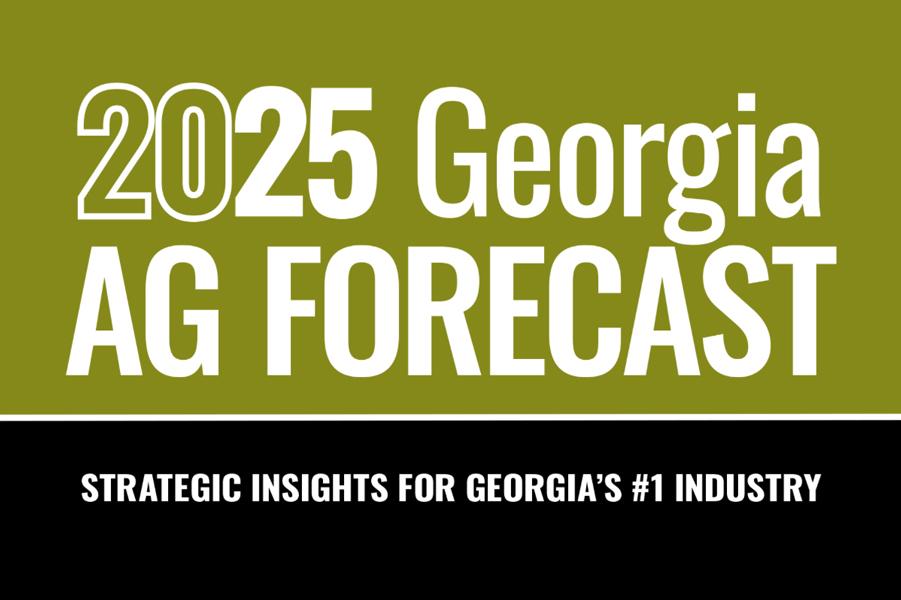Peanuts
-

SB 28-24
Peanut
Commercial insect and weed control in peanut. Updated annually.
Timothy Branner Brenneman, Stanley Culpepper, Eric P. Prostko, Robert C Kemerait Jr, Mark Abney, Walter Scott Monfort, Allison Faye Johnson, and Albert Ezekiel Culbreath
|
-

AP 130-3-08
Peanut Situation and 2025 Outlook
1. Peanut-planted acres in the United States and Georgia are expected to remain steady at current levels in 2025.
2. Forward contract prices in Georgia are projected to decline, with an estimated seasonal price range of $475–$525 per ton.
3. Peanut profitability is anticipated to remain a significant challenge for producers in 2025.Yangxuan Liu
|
-

AP 130-1-02
Peanut Situation and 2023 Outlook
1. Planted acres are expected to increase in 2023 in the United States and Georgia, a reversal of the 2-year decline in planted acres.
2. Georgia forward contract prices are expected to be down with an estimated season average price of $475 per ton (ranging $450–$500 per ton).
3. Peanut disappearance of the 2022–2023 crop is projected to remain strong at 3 million tons; this is supported by forecasted increases in food use and exports over last year.
Amanda R Smith
|
-

The peanut production guide includes varieties, agronomic practices, pest management, irrigation management, equipment maintenance, maturity, and harvest practices.
Timothy Branner Brenneman, Pam Knox, Ronald Scott Tubbs, Walter Scott Monfort, Cristiane Pilon, and Glendon H. Harris
|
-

A farm’s return on investment is directly affected by the way water is applied to its crops. The wrong end-gun settings can result in overwatering or underwatering large portions of field acres. Clogged or partially clogged nozzles lead to obvious water shortages that can be visually observed or measured using yield monitors. Systems not properly checked and maintained can lead to significant losses in potential income. This irrigation reference guide will contain information provided by UGA Extension recommended irrigation scheduling rates for corn, cotton, peanuts and soybeans. The guide will also recognize specific center pivot application issues and how to correct them.
David Hall and Wesley Porter
|
-

Grazon® P+D (picloram + 2,4-D) injury, diagnosed as leaf roll, is occasionally observed in Georgia peanut fields due to the presence of contaminated soil, forage, animal waste (manure/urine), and/or irrigation water. Since peanut plants are very tolerant of low levels of 2,4-D, the primary cause of these leaf roll symptoms is picloram. When this injury occurs, growers are often concerned about how it can potentially influence final peanut yield.
Eric P. Prostko
|
-

L’arachide est cultivée en Haïti depuis au moins 500 ans et remonte très probablement à la préhistoire. Selon Bartolomé de las Casas, un prêtre qui a accompagné Christophe Colomb lors de son expédition dans le Nouveau Monde et qui est accrédité avec la première description écrite de l’arachide, les Amérindiens indigènes ont cultivé l’arachide comme culture vivrière sur l’île d’Hispaniola avant l’arrivée des Européens. La production d’arachides en Haïti a continué jusqu’à nos jours. C’est une culture populaire parce qu’elle a un prix élevé sur le marché et qu’elle constitue une source de nourriture importante et agréable pour de nombreux Haïtiens. Les arachides séchées se trouvent toute l’année dans la plupart des marchés en plein air, et des produits à base d’arachides fabriqués localement, tels que le beurre d’arachide (y compris les formes sucrée, épicée et non aromatisée) sont couramment vendus dans les magasins et les supermarchés.
Timothy Branner Brenneman, Robert C Kemerait Jr, and Jamie Rhoads
|
-

This publication presents the results of the 2019 statewide performance tests of peanut, cotton, and tobacco. The tests for various evaluations were conducted at several or all of the following locations: Bainbridge, Tifton, Plains and Midville in the Coastal Plain region and Athens in the Piedmont region.
Dustin G Dunn, Henry Jordan, Daniel J Mailhot, and Stevan S. LaHue
|
-

This publication presents the results of the 2018 statewide performance tests of peanut, cotton, and tobacco. The tests for various evaluations were conducted at several or all of the following locations: Bainbridge, Tifton, Plains and Midville in the Coastal Plain region and Athens in the Piedmont region.
Dustin G Dunn, Henry Jordan, Daniel J Mailhot, and Stevan S. LaHue
|